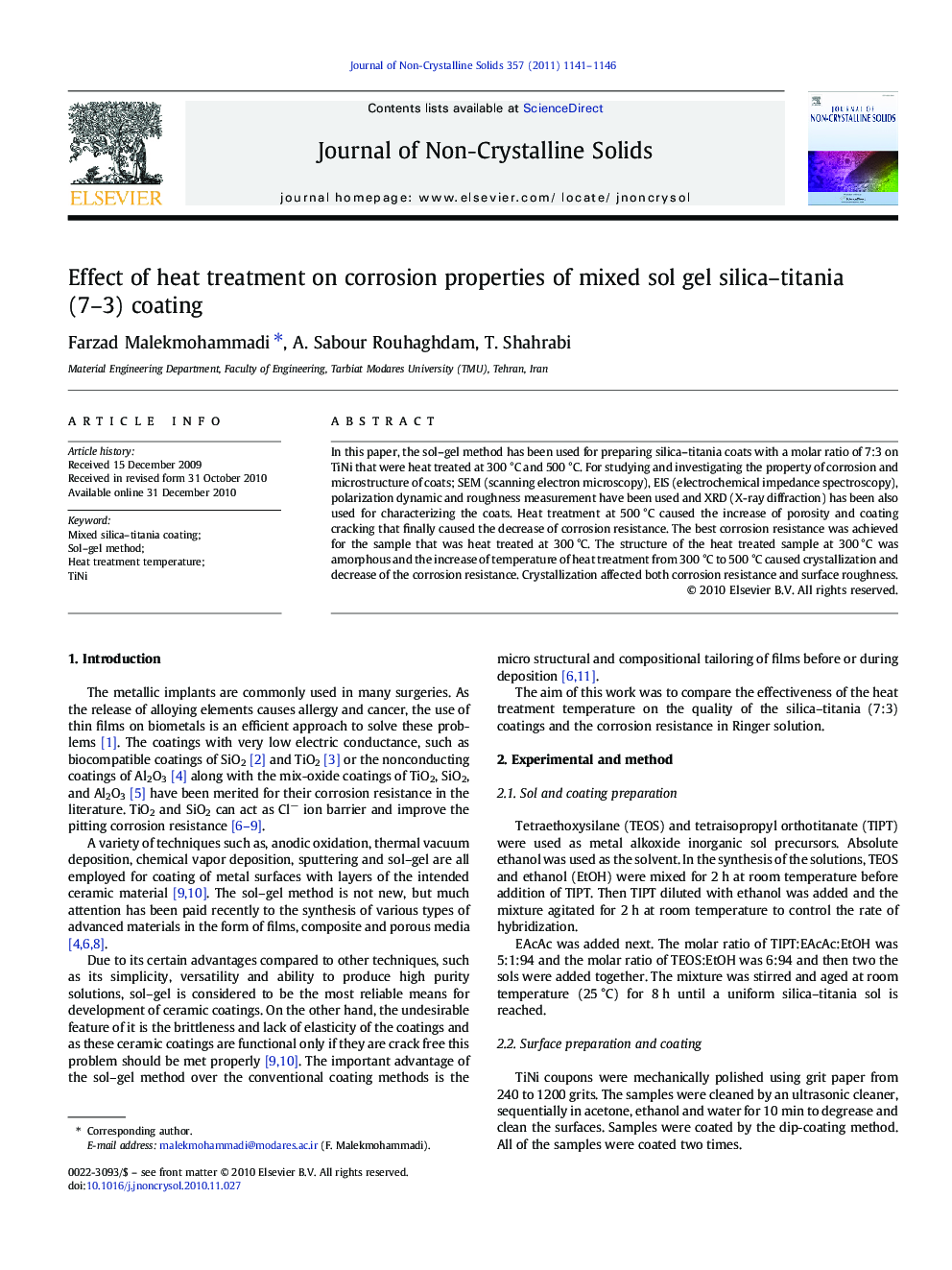| Article ID | Journal | Published Year | Pages | File Type |
|---|---|---|---|---|
| 1482486 | Journal of Non-Crystalline Solids | 2011 | 6 Pages |
In this paper, the sol–gel method has been used for preparing silica–titania coats with a molar ratio of 7:3 on TiNi that were heat treated at 300 °C and 500 °C. For studying and investigating the property of corrosion and microstructure of coats; SEM (scanning electron microscopy), EIS (electrochemical impedance spectroscopy), polarization dynamic and roughness measurement have been used and XRD (X-ray diffraction) has been also used for characterizing the coats. Heat treatment at 500 °C caused the increase of porosity and coating cracking that finally caused the decrease of corrosion resistance. The best corrosion resistance was achieved for the sample that was heat treated at 300 °C. The structure of the heat treated sample at 300 °C was amorphous and the increase of temperature of heat treatment from 300 °C to 500 °C caused crystallization and decrease of the corrosion resistance. Crystallization affected both corrosion resistance and surface roughness.
Research Highlights► Heat treating the silica–titania coating under crystallization temperature leads to a decrease in the percentage of porosity. ► Anatase phase transformation in the silica–titania coat has a direct effect on surface cracking and the corrosion resistance. ► Creating cracks during the heat treating process leads to changing the form of corrosion. ► Creating the crack free silica–titania coating on the TiNi surface causes the nobler surface potential and more positive breakdown potential.
